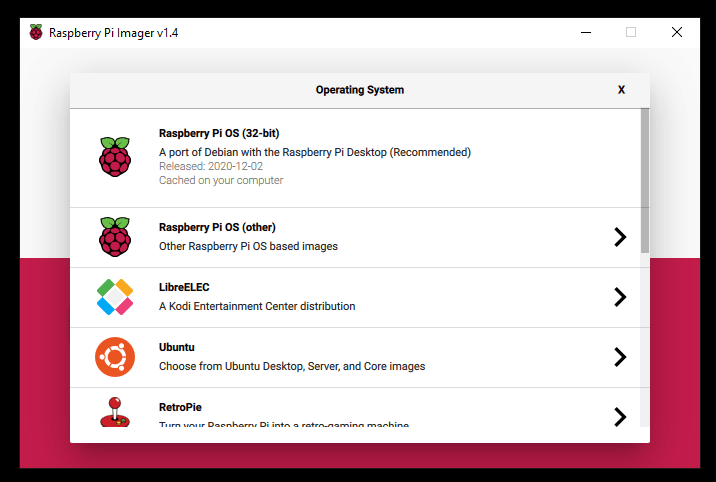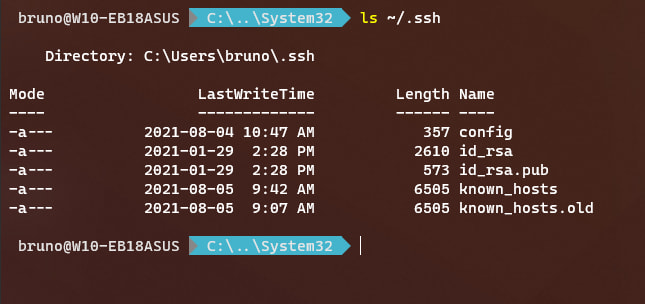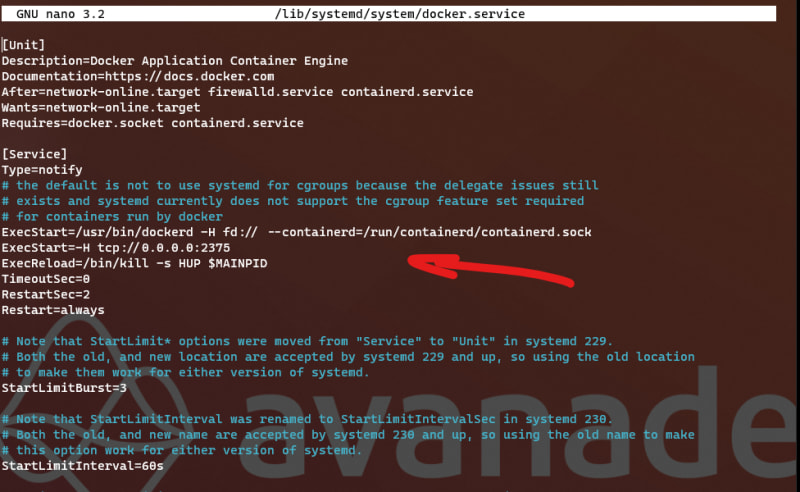Content
- Create SD card using Raspberry Pi Imager
- Configure Wireless connection (if needed)
- Enable SSH (if needed)
- Find the IP address in your network
- Access via SSH
- Change Password (if needed)
- Rename the device (if needed)
- Expand FileSystem
- Update the device
- Install Docker
- Setup SSH password-less access to the Raspberry Pi
- Setup password-less access to remote work with docker 🐳
- Run Docker 🐳 commands without sudo
Hi!
Let’s start installing the latest Raspberry Pi OS image in an SD card. Next steps will be focus on how to access and control remotely your device you may want to follow this steps.
This tutorial and tips works for Raspberry Pi 3, 4 and Zero.
The version 1.6 of Raspberry Pi Imager includes a new feature that allows to
- Define HostName
- Enable SSH
- Configure Wifi
- Set locale
Directly from the tool pressing the [Config] button
_ Note: Open the setting using this button is new in the latest Raspverry Pi imager version._
We can define this settings on the tool screen.
I’ll leave the old-school standard methods below just as a reference.
Configure Wireless connection (if needed)
In the SD Card, you need to create a file named [wpa_supplicant.conf] in the root of the SD card with the following information:
country=ca
update_config=1
ctrl_interface=/var/run/wpa_supplicant
network={
scan_ssid=1
ssid=" Your WiFi SSID"
psk="You amazing password"
}
The file content is very straight forward to understand. Main values to complete are [ssid] and [psk].
Once you put the SD card in the device and start the device, it will automatically connect to the configured WiFi.
Enable SSH (if needed)
If you also want to enable SSH, you need to create a blank file named [ssh] to the main partition.
Once you put the SD card in the device and start the device, it will automatically enable the SSH service.
So, you need to create and copy 2 files to the root of your SD card
- wpa_supplicant.conf
- ssh
Find the IP address in your network
And that’s it, your Raspberry Pi will be connected to the Wifi and with SSH enabled. At this moment we can use a tool like AngryIp (see references) to detect the new device in the network
My new device IP is: 192.168.1.246
I’m trying to avoid Java updates, and even install java, so lately I use a mobile app: Fing, and after a search the results are nicer.
Access via SSH
I used to like Putty to connect to my device, however during the past months I’ve been using Windows Terminal and Powershell. In order to access the device I need to execute the command
ssh user@deviceaddress
and my data is
- user: pi
- ip: 192.168.1.246
- password: raspberry
You can now start working with your Raspberry Pi !
If you get a SSH error message similar to this one
@@@@@@@@@@@@@@@@@@@@@@@@@@@@@@@@@@@@@@@@@@@@@@@@@@@@@@@@@@@
@ WARNING: REMOTE HOST IDENTIFICATION HAS CHANGED! @
@@@@@@@@@@@@@@@@@@@@@@@@@@@@@@@@@@@@@@@@@@@@@@@@@@@@@@@@@@@
IT IS POSSIBLE THAT SOMEONE IS DOING SOMETHING NASTY!
Someone could be eavesdropping on you right now (man-in-the-middle attack)!
It is also possible that a host key has just been changed.
---
Host key verification failed.
You need to run this command to fix the host hey.
# ssh-keygen -R <host>
ssh-keygen -R 192.168.1.247
_ Important: the default password is raspberry, please follow next step!_
Change Password (if needed)
The default password for the device is “raspberry”, and as usual, it’s recommended to change it. In order to do this, in the ssh terminal, let’s access to the device configuration
sudo raspi-config
This will open the configuration for the device.
Option number 1 will allow us to change the password.
Rename the device (if needed)
In the same section we can change the Host Name.
And define the new name for the Raspberry Pi device.
Expand FileSystem
Another important option in the configuration is to expand the SD disk.In the same configuration screen, select
- 6. Advanced Options
- Expand File System
Now we need to reboot and after the reboot the file system should have been expanded to include all available space on your micro-SD card. Reboot with the command
sudo reboot
Update the device
There are 2 ways to update the device, using commands and using raspi-config.
- In the Raspi Config main menu, the option 8 will launch the update commands.
- If you prefer to manually type an update command, this one works for me
sudo -- sh -c 'apt-get update; apt-get upgrade -y; apt-get dist-upgrade -y; apt-get autoremove -y; apt-get autoclean -y'
Install Docker
The information is available from the Official Docker Documentation
curl -fsSL https://get.docker.com -o get-docker.sh
sudo sh get-docker.sh
And then, a simple check for the docker version with the command
docker version
Setup ssh password-less access to the Raspberry Pi
The main resource is an official one fro the Raspberry Pi org: Passwordless SSH access. Here is a quick resume for Windows 11 users. First let’s run this command
ls ~/.ssh
I already keys on my computer, so I found id_sa and id_rsa.pub.
Now, let’s copy them to the device. For this this command:
cat ~/.ssh/id_rsa.pub | ssh <USERNAME>@<IP-ADDRESS> 'mkdir -p ~/.ssh && cat >> ~/.ssh/authorized_keys'
And that’s it! Now we can ssh the Raspberry Pi without password.
_ Disclaimer: you know that this is not a very secure practice?_
Setup SSH password-less access to remote work with docker 🐳
Once we finished ssh password-less access, we can easily configure a TCP-enabled Docker.
I followed the next steps. First, let’s edit docker.service with the command:
sudo nano /lib/systemd/system/docker.service
And add [-H tcp://0.0.0.0:2375] at [ExecStart] section:
And restart the device or just the needed services
- run sudo systemctl daemon-reload
- run sudo systemctl restart docker
Run Docker 🐳 commands without sudo
Now let’s upgrade our docker commands, so we can run them without sudo. Just run this commands
sudo groupadd docker
sudo gpasswd -a $USER docker
And also restart the service:
sudo service docker restart
Conclusion
And that’s it, we have our device updated and running with the latest software versions and we didn’t use a monitor! I’ll update this post frequently to make it relevant with my personal best practices.
Happy coding!
Greetings
El Bruno
My posts on Raspberry Pi ⚡🐲⚡
Dev posts for Raspberry Pi
- How to grant permissions to a folder after git clone, to perform dotnet restore on a Raspberry Pi
- How to install .Net Core 3.1 in a Raspberry Pi 4
- Installing Visual Studio Code in a Raspberry Pi 4, run as root, fix black screen
- How to install .Net Core in a Raspberry Pi 4 and test with Hello World
- Build and Run C# NetCore projects in a Raspberry Pi 4 with Visual Studio Code
- Let’s do some Git dev in Raspberry Pi 4 (GitHub and Azure DevOps!)
- Install OpenCV
- Install Python 🐍 Virtual Environments in Raspberry Pi
- Setup SSH passwordless access to remote work with Docker 🐳
- Manage Docker 🐳 as a non-root user
- Build Docker 🐳 images from Visual Studio Code remotely using a Raspberry Pi
Tools and Apps for Raspberry Pi
- Where is my Task Manager in RaspberryPi? Let’s try htop
- Multi-monitor 📺 in Raspberry Pi 4 rocks !
- Double Commander on RaspberryPi4, because files are important
- How to install Docker 🐳 in a Raspberry Pi 4
- Installing Visual Studio Code in a Raspberry Pi
- Installing Visual Studio Code in a Raspberry Pi, run as root, fix black screen (Updated)
- 6 commands to install OpenCV for Python 🐍 in a Raspberry Pi 4
Setup the device
- 1st Setup without monitor 📺: auto connect to WiFi 📶, enable SSH, update and more
- Setup without monitor: enable VNC
- How to enable auto start with HDMI safe mode
- Running a Python 🐍 script in a Python Virtual Environment on reboot / startup
- Setup Wifi on Ubuntu


















Top comments (0)